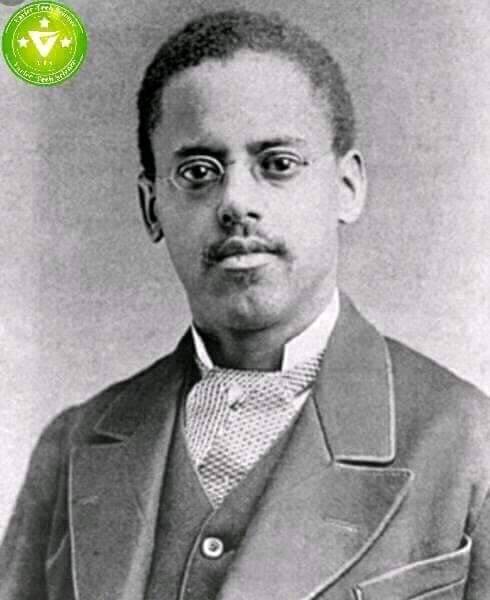#lewis howard latimer
Text

Shining a Light on Lewis Latimer A Visionary Who Transformed Technology
#lewis latimer#lewis howard latimer#black inventor#black inventors#black power#black excellence#black history#black tik tok
50 notes
·
View notes
Text
On This Day Lewis Howard Latimer Was Born September 4 1848
Lewis Howard Latimer (1848–1928) was an African-American inventor, engineer, and patent draftsman who made significant contributions to the fields of electrical engineering and the development of the telephone and incandescent light bulb. He played a vital role in the early days of electric lighting and power distribution.
Latimer was born on September 4, 1848, in Chelsea, Massachusetts, to…
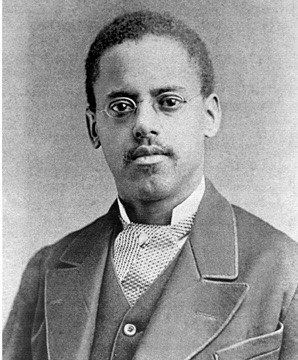
View On WordPress
#African-American Inventors#Latest#Lewis Howard Latimer#telecommunications#The Birthday Of#Trending News
4 notes
·
View notes
Text
Tucker Foley Bedroom🛏️
💡💡💡

Made a bedroom for my version of Tucker! I went for HUGE Gamer vibes👾🎮
I added as much Game stuff as I could such as action figures, a whole gamer desk set up and all sorts of other game decor. The action figures in the middle are based on the characters they played in the Doomed video game they played in Teacher Of the Year, The blue one has a Halo style sword! That wolf girl is also from the show in Reality Trip that Tucker thought was hot from that comic convention.
I also added a bit of his inventor/smart teen vibes in there as well with the tool box and Phantom Drone he’s working on like how he was suppose to in the show’s future! I also added an inspirational quote from Lewis Howard Latimer, a famous Black Inventor, a Hidden Figures poster, a finished Rubik’s cube, binders that could be for recording his research, a University of Minnesota flag(Heard Amity’s suppose to be Minnesota) and some ribbons I see him won from science fairs! I like showing him with a big brain🧠💡
For his books, I added a Pokémon Card collection, AKIRA, Greatest Innovators, Ecto as Alt-Energy, Dune, Brave New World and Transformers More Than Meets The Eye Volume:1-5.
There was never really a lot of episodes that showed Tuckers room but I found some pics, from Frightmare and Teacher Of the Year. It showed some tech stuff and I wanted to push that even more, especially with his love of gaming. I also made it more yellow, his motif color💛💛💛
I also made a bedroom for Sam🦇🦇🦇💜💜💜
https://www.tumblr.com/dnpanimationstudioclone/713814130862276608/sam-manson-bedroom?source=share
What do u think? What would u want to see in Tucker’s room? I’d love to know💖
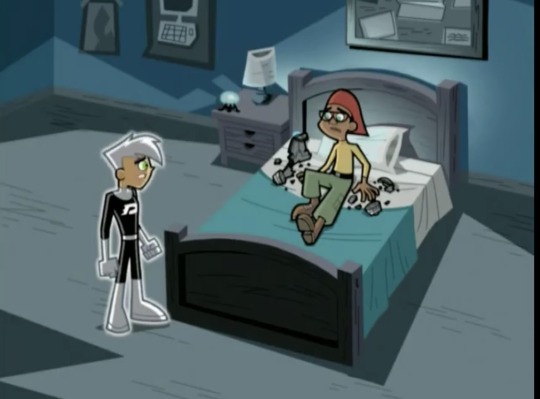


#Danny phantom#tucker foley#dp tucker#bedroom#Dp bedroom#phanart#dp fanart#phart#my art#art#digital art#bedroom illustrations#background illustration#background design#background#Dp redesign#dannyphantom#danny phantom art
83 notes
·
View notes
Text
MOGAI BHM- Belated Day 16!
happy BHM! today i’m going to be listing different important inventions by Black people!
Black Inventors-
Marie Van Brittan Brown invented modern home security systems.
Jane C. Wright invented several chemotherapy drugs still in use today.
Alan Emtage invented the first internet browser, which he called ‘Archie’.
George Carruthers invented the ultraviolet spectrograph, which eventually accompanied probes to the moon.
Mark Dean invented forms of processor chips and co-created the IBM computer in 1987.
Patricia Bath pioneered early laser cataract surgery.
Lonnie Johnson invented the popular Super Soaker.
Lewis Howard Latimer helped invent the telephone and invented carbon filaments which hugely improved incandescent light bulbs.
Garrett Morgan invented a form of a gas mask and the three-position traffic signal.
Dr. James West helped co-invent microphone technology.
Lisa Gelobter was crucial to inventing Shockwave, the internet’s first web animation technology.
Frederick McKinley Jones invented and innovated refrigeration technology, including refrigerated trucks which were crucial in WWII.
Alexander Miles invented automatic elevator doors.
Madame CJ Walker invented a huge hair and beauty line for African American hair.
Elijah McCoy invented the portable ironing board and Sarah Boone innovated it.
Alice Parker invented a heating furnace system still used by many today.
Charles Brooks invented the design and technology for modern trucks that clean and sweep city streets.
George Alcorn invented x-ray imaging spectroscopy.
Benjamin Banneker invented America’s first clock.
Otis Boykin invented improved electrical resistors that are used today in everything from TVs to computers to radios.
Dr. Charles Drew created innovations in blood plasma that led to the creation of blood banks.
Dr. Philip Emeagwali invented the world’s fastest computer.
James Parsons work led to the invention of stainless steel.
George Washington Carver invented many, many culinary products derived from peanuts.
There are many, many more. I can not list them all here. I highly recommend looking more into the history of Black inventors and innovators, especially in the field of STEM! There are some good resources below to get you started!
Tagging @metalheadsforblacklivesmatter
Sources-
https://www.black-inventor.com/
https://www.eduporium.com/blog/eduporium-weekly-celebrating-significant-stem-accomplishments-by-black-innovators/
https://sphero.com/blogs/news/black-leaders-in-stem
https://www.idtech.com/blog/black-stem-innovators-who-defined-modern-world
https://news.vmware.com/dei/10-black-technology-inventors-innovators
https://www.biography.com/inventors/madam-cj-walker-black-inventors
https://www.black-inventor.com/george-alcorn
https://www.black-inventor.com/benjamin-banneker
https://www.black-inventor.com/otis-boykin
https://www.black-inventor.com/dr-charles-drew
https://education.nationalgeographic.org/resource/african-american-inventors-20th-and-21st-century/
60 notes
·
View notes
Text
Lights last longer thanks to Mr. Lewis Howard Latimer 💡👏🏿
#black history#black history month#lightbulb moment#carbon filament#yamnbananas#trillnoir#digital art#glitché#art#lightbulb#incandescent#black inventors#national inventors hall of fame#engineering#thomas edison#Lewis Harold Latimer#american history
10 notes
·
View notes
Photo

Lewis Howard Latimer (September 4, 1848 – December 11, 1928) was an African-American inventor and patent draftsman. His inventions included an evaporative air conditioner, an improved process for manufacturing carbon filaments for light bulbs, and an improved toilet system for railroad cars. In 1884, he joined the Edison Electric Light Company where he worked as a draftsman and wrote the first book on electric lighting. The Lewis H. Latimer House, his landmarked former residence, is located near the Latimer Projects at 34-41 137th Street in Flushing, Queens, New York City. He was born in Chelsea, Massachusetts, the youngest of the four children of Rebecca Latimer (1823–1910) and George Latimer (1818–1897). His mother and father escaped from slavery in Virginia and fled to Chelsea, Massachusetts on October 4, 1842. The day they arrived in Boston, George was recognized by a colleague of his former slave owner and was arrested a few days later, on October 20, 1842. George's trial received great notoriety; he was represented by Frederick Douglass and William Lloyd Garrison. He was able to purchase his freedom and live with his family. He joined the Navy at the age of 15 and served as a Landsman on the USS Massasoit. After receiving an honorable discharge from the Navy on July 3, 1865, he gained employment as an office boy with a patent law firm, Crosby Halstead and Gould. He learned how to use a set square, ruler, and other tools. He was promoted to the position of the head draftsman. He became a patent consultant to law firms. He married Mary Wilson Lewis on November 15, 1873, in Fall River, Massachusetts. The couple had two daughters, Emma Jeanette (1883–1978) and Louise Rebecca (1890–1963). In 1879, he and his wife, Mary, moved to Bridgeport, Connecticut, along with his mother, and his brother, William. They settled in a neighborhood called "Little Liberia," which had been established in the early 19th century by free blacks. (The landmarked Mary and Eliza Freeman Houses are the last surviving buildings on their original foundations in this community.) #africanhistory365 #africanexcellence https://www.instagram.com/p/CiFWs90u2rqqQfuMJpJEY2LAA9GouLc8-LldoY0/?igshid=NGJjMDIxMWI=
2 notes
·
View notes
Video
youtube
This FORMER SLAVE Invented Something That LIGHTS UP YOUR WORLD (You Won'...
Discover the inspiring story of former slave, Lewis Howard Latimer, who invented something that lights up our world today! Celebrate Black History Month by learning about this #ScienceHero's contributions. #LewisLatimer #Inventor #BlackHistoryMonth #ScienceHero #englishhistory
0 notes
Text
Birthdays 9.4
Beer Birthdays
Samuel Simon Loeb (1862)
William Hamm, Jr. (1893)
Ken Weaver (1983)
Five Favorite Birthdays
Anton Bruckner; Austrian composer (1824)
Whitney Cummings; comedian (1982)
Candy Loving; Playboy playmate 1/79 (1956)
Darius Milhaud; French composer (1892)
Ione Skye; English-American actress (1971)
Famous Birthdays
Joan Aiken; English author (1924)
Al-Biruni; Persian physician and polymath (973)
Carl Heinrich Biber; Austrian composer (1681)
Janet Biehl; philosopher (1953)
Daniel Burnham; architect (1846)
Martin Chambers; English drummer and singer (1951)
Craig Claiborne; journalist, author (1920)
Darryl Cotton; Australian singer-songwriter and guitarist (1949)
Francois Rene de Chateaubriand; French writer (1776)
Max Delbrück; German-American biophysicist (1906)
Edward Dmytryk; film director (1908)
Gary Duncan; rock guitarist (1946)
Danny Gatton; guitarist (1945)
Mitzi Gaynor; actor, dancer (1931)
Clive Granger, Welsh-American economist (1934)
George William Gray, British chemist, creator of liquid crystals (1926)
Max Greenfield; actor (1980)
Kevin Harrington; Australian actor (1959)
Paul Harvey; radio journalist (1918)
Jacqueline Hewitt; astrophysicist and astronomer (1958)
Syd Hoff; author and illustrator (1912)
Constantijn Huygens; Dutch poet and composer (1596)
Beyoncé Knowles; pop singer (1981)
Lewis Howard Latimer; inventor (1848)
Alexander Liberman, Russian-American artist (1912)
Dave Liebman; saxophonist (1946)
Donald McKay; shipbuilder (1810)
Kyle Mooney; comedian (1984)
Albert Joseph Moore; English artist (1841)
Stanford Moore; biochemist (1913)
Howard Morris; comedian (1919)
Gene Parsons; singer-songwriter, guitarist, and banjo player (1944)
George Percy; English explorer (1580)
Mike Piazza; New York Mets C (1968)
Drew Pinsky; radio and television host (1958)
Mary Renault; English writer (1905)
Oskar Schlemmer; German artist (1888)
Hanna Schwamborn; German actress (1992)
Jan Švankmajer; Czech filmmaker (1934)
Kim Thayil; guitarist and songwriter (1960)
Tom Watson; golfer (1949)
Damon Wayans; actor, comedian (1960)
Dallas Willard; philosopher (1935)
Gerald Wilson; trumpet player (1918)
Richard Wright; writer (1908)
Shinya Yamanaka; Japanese biologist (1962)
Dick York; actor (1928)
Bobby Jarzombek; drummer (1963)
1 note
·
View note
Photo
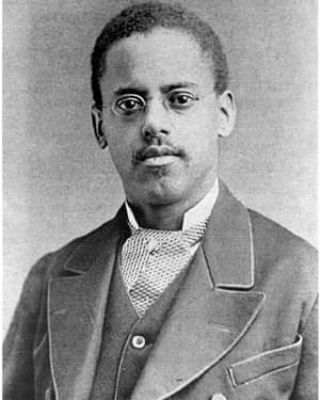
Lewis Howard Latimer (September 4, 1848 – December 11, 1928) was a black American inventor and patent draftsman. His inventions included an evaporative air conditioner, an improved process for manufacturing carbon filaments for light bulbs, and an improved toilet system for railroad cars. In 1884, he joined the Edison Electric Light Company where he worked as a draftsman and wrote the first book on electric lighting. His house is located near the Latimer Projects and is a historic house located at 34-41 137th Street in Flushing, Queens, New York City. (at Black History Month) https://www.instagram.com/p/Co9nS3VLx_Y/?igshid=NGJjMDIxMWI=
0 notes
Photo

We celebrated the legacy of the Unitarian Universalist Congregation of Queens (UUCQ), which has served our community for more than a hundred years, at their last service this week. It was a bittersweet moment for a congregation that welcomed people like me, supported struggles for social justice, and helped establish the Flushing Interfaith Council. Lewis Howard Latimer, who founded UUCQ in1908, was its most famous member, overcoming his family's enslavement, teaching himself to draft patents, inventing the carbon filament (making possible Edison's light bulb), and becoming a poet and artist. While UUCQ closes its doors today, it opened possibilities for so many throughout its history. What the world needs is more unitarians! (at Flushing) https://www.instagram.com/p/Ce0vxMMuuC8/?igshid=NGJjMDIxMWI=
1 note
·
View note
Text
You know Thomas Edison. Great with business and marketing.
You know Nicola Tesla. The Genius Brain™.
You know Alexander Graham Bell. The boy who wanted to phone home.
Let me introduce you to
Lewis Howard Latimer (c. 1848–c. 1928)
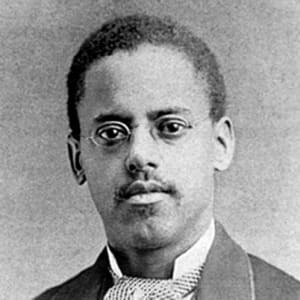
Lewis Howard Latimer was an inventor and draftsman best known for his contributions to the patenting of the light bulb and the telephone.
Who Was Lewis Howard Latimer?
Inventor and engineer Lewis Howard Latimer was born to parents who had fled slavery. Latimer taught himself mechanical drawing and drafting by observing the work of draftsmen while working at a patent firm. Recognizing Latimer's talent and promise, the firm partners promoted him from office boy to draftsman. In addition to assisting others, Latimer designed a number of his own inventions, including an improved railroad car bathroom and an early air conditioning unit.
Latimer's talents were well-matched to the post-Civil War period, which saw a large number of scientific and engineering breakthroughs. Working with Bell, Latimer helped draft the patent for Bell's design of the telephone. He was also involved in the field of incandescent lighting, a particularly competitive field, working for Hiram Maxim and Edison. [x]
Latimer wrote the first book on electric lighting, Incandescent Electric Lighting (1890) and supervised the installation of public electric lights throughout New York, Philadelphia, Montreal, and London. [x]
During the installation of lighting in Montreal, where a lot of people spoke only French, Latimer learned the language in order to competently instruct the workers. In London, he set up the first factory for the Maxim-Weston Electric Light Company. That required him to teach the workmen all the processes for making Maxim lamps, including glassblowing. In a brief nine months, Latimer had the factory in full production. [x]
11 notes
·
View notes
Text
Star Wats. it’s just Star Wars but lightsabers are lightbulbs on the ends of sticks. in order to use them, you throw the stick and the ghosts of Lewis Howard Latimer and Thomas Edison beat both of you to death.
3 notes
·
View notes
Text
Genius Level People of Each Zodiac Sign
Aries - Christopher Langan, William James Sidis, Leonardo da Vinci, Garry Kasparov, René Descartes, James Woods
Taurus - Richard Feynman, Rick Rosner, John Stuart Mill
Gemini - John Forbes Nash Jr., Tim Berners-Lee, Ken Jennings
Cancer - Elon Musk, Nikola Tesla, Alan Turing, Terence Tao
Leo - Marilyn vos Savant, Judit Polgar
Virgo - Steven Pinker, Lewis Howard Latimer
Libra - Sho Yano
Scorpio - Jodie Foster, Aaron Swartz, Akshay Venkatesh
Sagittarius - Magnus Carlsen, Baruch Spinoza, Scott Joplin, Grace Hopper, Chris Hirata
Capricorn - Isaac Newton, Stephen Hawking, Bjarne Stroustrup, George Washington Carver, Michael Kearney
Aquarius - Michio kaku, Galileo Galilei, Thomas Edison, Wolfgang Amadeus Mozart, Charles Dickens
Pisces - Albert Einstein, Steve Jobs, Bobby Fischer
#zodiac#zodiacsigns#astrology#genius#aries#taurus#cancer#leo#virgo#libra#scorpio#sagittarius#capricorn#aquarius#pisces
18 notes
·
View notes
Photo

Lewis Howard Latimer (September 4, 1848 – December 11, 1928) was an inventor and patent draftsman. His inventions included an evaporative air conditioner, an improved process for manufacturing carbon filaments for light bulbs, and an improved toilet system for railroad cars. In 1884, he joined the Edison Electric Light Company where he worked as a draftsman and wrote the first book on electric lighting. The Lewis H. Latimer House, his landmarked former residence, is located near the Latimer Projects at 34-41 137th Street in Flushing, Queens. He was born in Chelsea, Massachusetts, the youngest of the four children of Rebecca Latimer (1823–1910) and George Latimer (1818–1897). His mother and father escaped from slavery in Virginia and fled to Chelsea, Massachusetts on October 4, 1842. The day they arrived in Boston, George was recognized by a colleague of his former slave owner and was arrested a few days later, on October 20, 1842. George's trial received great notoriety; he was represented by Frederick Douglass and William Lloyd Garrison. He was able to purchase his freedom and live with his family. He joined the Navy at the age of 15 and served as a Landsman on the USS Massasoit. After receiving an honorable discharge from the Navy on July 3, 1865, he gained employment as an office boy with a patent law firm, Crosby Halstead and Gould. He learned how to use a set square, ruler, and other tools. He was promoted to the position of head draftsman. He became a patent consultant to law firms. He married Mary Wilson Lewis on November 15, 1873, in Fall River, Massachusetts. The couple had two daughters, Emma Jeanette (1883–1978) and Louise Rebecca (1890–1963). In 1879, he and his wife, Mary, moved to Bridgeport, Connecticut, along with his mother, and his brother, William. They settled in a neighborhood called "Little Liberia," which had been established in the early 19th century by free blacks. (The landmarked Mary and Eliza Freeman Houses are the last surviving buildings on their original foundations in this community.) #africanhistory365 #africanexcellence https://www.instagram.com/p/CmB56oXLF9y/?igshid=NGJjMDIxMWI=
1 note
·
View note
Photo
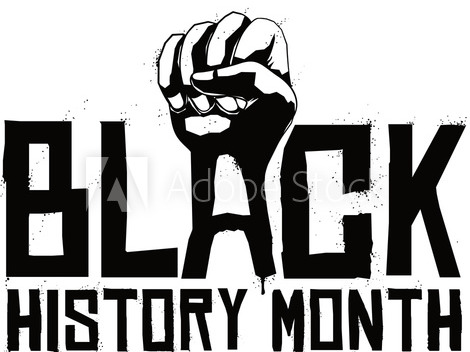
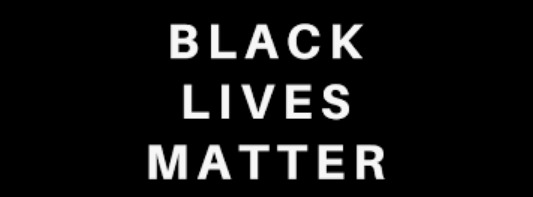
WHERE WOULD WE BE..........
This is a story of a little boy name Theo who woke up one morning and asked his mother, “Mom, what if there were no Black people in the world?”
Well his mother thought about that for a moment, and then said “Son, follow me around today and lets just see what it would be like if there were no Black people in the world.”
Mom said, “Now go get dressed and we will get started.” Theo ran to his room to put on his clothes and shoes. His mother took one look at him and said “Theo, where are your shoes, and those clothes are all wrinkled son, I must iron them.”
But when she reached for the ironing board it was no longer there. You see Sarah Boone, a black woman, invented the ironing board and Jan E. Matzelinger, a black man, invented the shoe lasting machine.
“Oh well,” she said, “please go and do something to your hair.” Theo ran in his room to comb his hair, but the comb was not there. You see, Walter Sammons, a black man, invented the comb. Theo decided to just brush his hair, but the brush was gone. You see Lydia O. Newman, a black female, invented the brush.
Well this was a sight, no shoes, wrinkled clothes, hair a mess, even Moms hair, without the hair care inventions of Madam C.J. Walker, well you get the picture.
Mom told Theo, “lets do our chores around the house and then take a trip to the grocery store.” Theo’s job was to sweep the floor. He swept and swept and swept. When he reached for the dust pan, it was not there. You see, Lloyd P. Ray, a black man, invented the dust pan. So he swept his pile of dirt over in the corner and left it there.
He then decided to mop the floor, but the mop was gone. You see, Thomas W. Stewart, a black man, invented the mop.
Theo yelled to his Mom, “Mom, I’m not having any luck.” “Well son,” she said, “let me finish washing these clothes and we will prepare a list for the grocery store.” When the wash finished, she went to place the clothes in the dryer but it was not there. You see, George T. Samon, a black man, invented the clothes dryer.
Mom asked Theo to go get a pencil and some paper to prepare their list for the market. So Theo ran for the paper and pencil but noticed the pencil lead was broken. Well he was out of luck because John Love, a black man, invented the pencil sharpener.
Mom reached for a pen, but it was not there because William Purvis, a black man, invented the fountain pen. As a matter of fact, Lee Burridge invented the type writing machine, and W. A. Lovette the advanced printing press.
Theo and his mother decided to head out to the market. Well when Theo opened the door he noticed the grass was as high as he was tall. You see, the lawn mower was invented by John Burr, a black man.
They made their way over to the car and found that it just wouldn’t go. You see, Richard Spikes, a black man, invented the automatic gear shift and Joseph Gammel invented the supercharge system for internal combustion engines. They noticed that the few cars that were moving were running into each other and having wrecks because there were no traffic signals. You see, Garrett A. Morgan, a black man invented the traffic light.
Well, it was getting late, so they walked to the market, got their groceries and returned home. Just when they were about to put away the milk, eggs and butter, they noticed the refrigerator was gone. You see John Standard, a black man, invented the refrigerator. So they just left the food on the counter.
By this time, Theo noticed he was getting mighty cold. Mom went to turn up the heat, and what do you know. Alice Parker, a black female, invented the heating furnace. Even in the summer time they would have been out of luck because Frederick Jones, a black man, invented the air conditioner. It was almost time for Theo’s father to arrive home. He takes the bus. But there was no bus, because it’s precursor was the electric trolley, invented by another black man, Elbert R. Robinson.
He usually takes the elevator from his office on the 20th floor, but there was no elevator because Alexander Miles, a black man, invented the elevator. He also usually dropped off the office mail at a near by mailbox, but it was no longer there because Philip Downing, a black man, invented the letter drop mailbox and William Barry invented the postmarking and canceling machine.
Theo and his mother sat at the kitchen table with their heads in their hands. When the father arrived he asked, “Why are you sitting in the dark?” Why? Because Lewis Howard Latimer, a black man, invented the filament within the light bulb. Theo quickly learned what it would be like if there were no black people in the world. Not to mention if he were ever sick and needed blood. Charles Drew, a black scientist, found a way to preserve and store blood, which led to his starting the worlds first blood bank. And what if a family member had to have heart surgery? This would not have been possible without Dr. Daniel Hale Williams, a black doctor, who performed the first open heart surgery.
So if you ever wonder, like Theo, where would we be without black people? Well, it’s pretty plain to see.
We would still be in the DARK!!!!
IF YOU GAINED ANY INSIGHT FROM THIS PLEASE PASS IT ON
“What If There Were No Black People?” is a poem written and self-published by Sean Mauricette, also known as “SUBLIMINAL.”
6 notes
·
View notes
